|
||||||||
|
|
|
2019-07-10 ArtNo.46549
◆New book:The origin of Christianity: An Epic Tale of the People of the Covenant
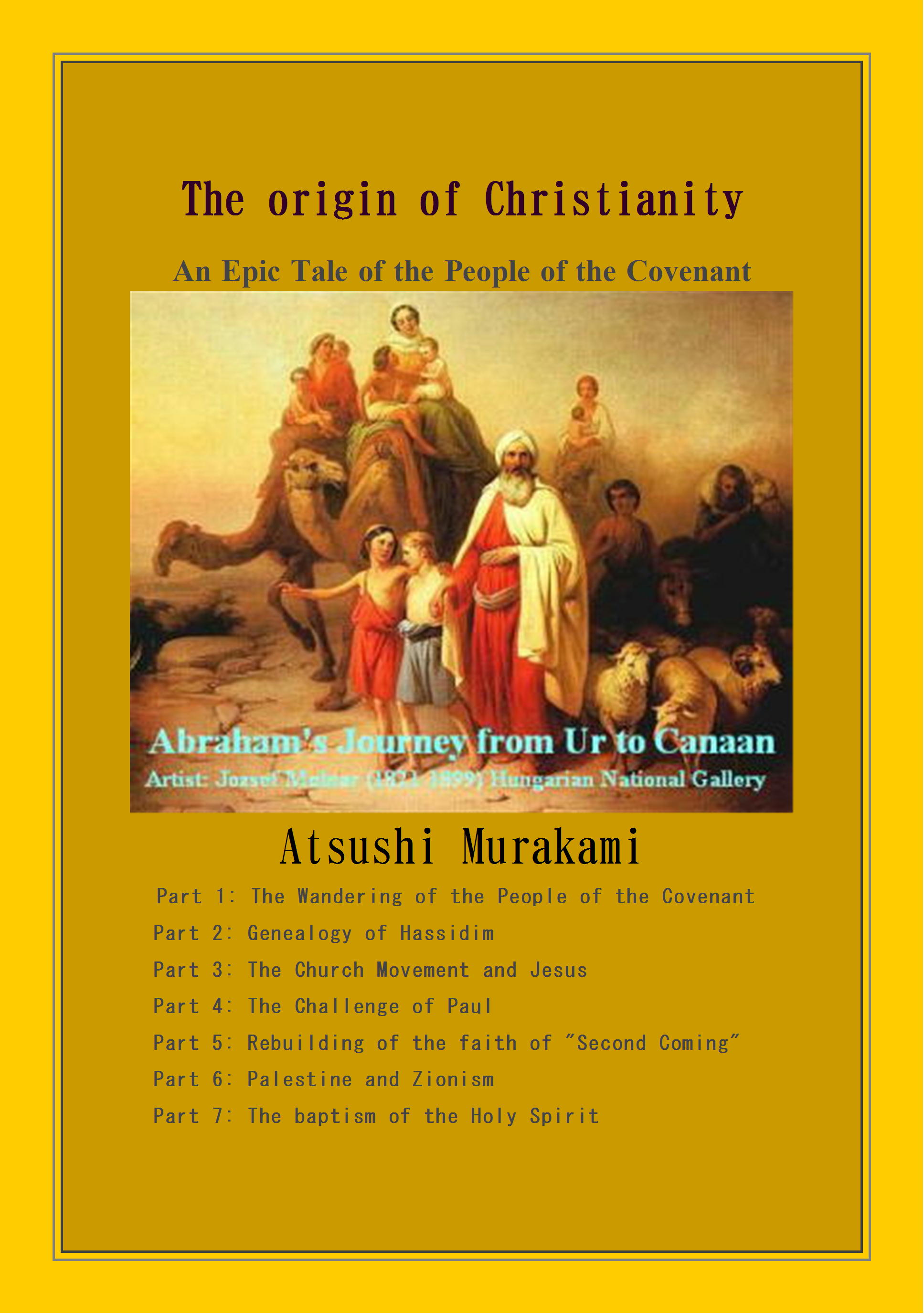 [Preface] In the region from Mesopotamia situated within the Tigris–Euphrates river to Palestine, city states, where agricultural and nomadic people had lived together, have risen and fallen since ancient times. The agricultural people played leading role in the most of these city states. However, the nomads traded not only with Egypt in the west but also with India and China in the east and served as catalysts for cross-cultural fusion. These nomads had consisted of many tribes, such as Reuben, Simeon, Levi, Judah, Issachar, Zebulun, Joseph, Benjamin, Dan, Naphtali, Gad, Asher, Manasseh, Ephraim and so on and had different cultural backgrounds such as Mesopotamia and Egypt. They had also believed in different patron gods. But they formed a union of independent tribes and established the unity of religion and politics based on the covenant of the single founder Abraham and God from 3,000 to 4,000 years ago in Palestine region and appeared on history's center stage replacing agricultural people. Thus the People of the Covenant was born. The total number of the People of the Covenant, that is, Judaism, Christianity and Islam, is said to be 3.4 billion now. ---------------------- ---------------------- In [Part 1: The Wandering of the People of the Covenant] of this book, let's look at 'the birth of the People of the Covenant,' 'the formation of tribal nation,' 'the division and destruction of nations,' 'the period of Persian rule' and 'the period of Hellenistic rule.' In [Part 2: Genealogy of Hassidim], let's examine the periods of 'Maccabean Revolt,' 'Hasmonean Dynasty,' and 'Herod Dynasty.' In [Part 3: The Church Movement and Jesus] let's examine the relationship between 'the Church Movement' and Jesus, his disciples, the High Priest, and the royal family. In [Part 4: The Challenge of Paul] we will focuse on Paul's teachings and Paul's missionary work. In [Part 5: Rebuilding of the faith of "Second Coming" and criticism against Paul>, we will] focus on rebuilding the faith of the second coming after the Jewish war and the criticism against Paul that arose in the rebuilding process. In [Part 6: Palestine and Zionism] we will examine the current situation of Israel and Palestine in the context of the theme "The Wandering of the People of the Covenant." In [Part 7: The baptism of the Holy Spirit], let's look at the spirit behind the words of Jesus and his disciples written in "Gospel of Thomas", "Acts (Paul)", "Gospel of John" and "Gospel of Matthew." Jesus said, "The truth will set you free.(John8:32)" I hope this book will resolve the contradiction among Judaism, Christianity and Islam, and contribute to the realization of peace in the Middle East, even in the world. [Highlights] The following are excerpts of the contents of the reports on the progress of the editing work of "An Epic Tale of the People of the Covenant" on our Facebook Messenger site. 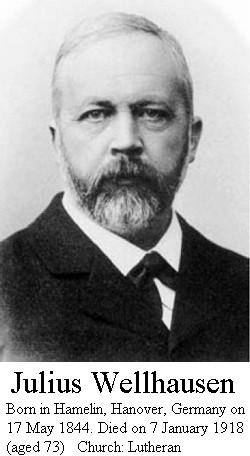 ○Documentary hypothesis Regarding the birth of the Old Testament, the theory called "Documentary hypothesis" was established during the 18th century and the 19th century. Based on this theory, Torah is not a unified work from a single author, that is. Moses, but is made up of sources combined over many centuries by many hands. According to the German theologian Julius Wellhausen; Jahwist was the earliest document, a product of the 900s BC and the court of Solomon; Elohist was from the 8th century BCE in the northern Kingdom of Israel, and had been combined by a redactor (editor) with Jahwist to form a document JE; Deuteronomium the third source, was a product of the 7th century BC, by 620 BCE, during the reign of King Josiah; Priesterschrift was a product of the priest-and-temple dominated world of the 6th century BC. Jahwist is the temporary name of the Bible editor after the designation of God in the kingdom of Judah. Elohist is the temporary name of the Bible editor after the designation of God in the North Kingdom of Israel. Priesterschrift is documentation on the law in the five books except Deuteronomy and Mr. Wellhausen sees that they were written after the first Babylonian capture of Jerusalem around 550 BC. This hypothesis, which is based on the hypothesis that Moses Five Books were established through compiling the eyewitness testimony by many people concerning the process of formation, collapse and dispersion of the Jewish people and nation in a temporary name of Moses in later generations, seems to be able to be applied to the New Testament as well. It seems that the New Testament was established through compiling the eyewitness testimony by many people concerning the hundreds years of church movement occurred among gentiles in a temporary name of Jesus in later generations. Interestingly, although the possibility of the existence of Jesus is higher than Moses and the activities and achievements of Jesus' brothers and his disciples are clear, the all-important activities of Jesus in his lifetime are unclear. The actual activities of Jesus might have been hidden intentionally by the scribes of each volume of the New Testament. 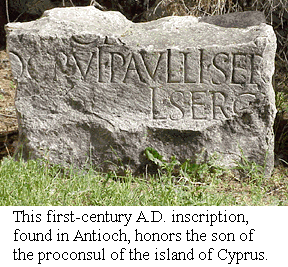 ○Paulus' family However, it is not hard to imagine that the families of Roman proconsul of Cyprus Sergius Paulus and his son Lucius Sergius Paullus, Roman Senator lived in Pisidian Antioch, played a major role not only in Asia Minor but also in Greek and even in Rome as patrons of Paul's missionary activity from both sides of funds and political support after Paul had met with the Roman governor of Cyprus in the course of his first missionary trip and changed his Hebrew name of Saul into Latin name of Paul. At the time when the total population of the Roman citizens was 4,937,000 (according to the census of the year 14th AD), the launching move a new organization for 4 million Diaspora should have caught the attention of not only the High Priest Caiaphas but also Sergius Paulus' family. On the other hand, Paul seems to have found the magnitude of the possibility of a universal religion that was not bound by the law of Moses in the churches movement of the Hellenistic followers whose population mighet have been several times more if the uncircumcised followers were counted in them. He might have thought that it is nothing else to insulate from Judaism in order to make Christianity a universal religion for mankind as a whole and the rejection of circumcision can be used as an ace in the hole. 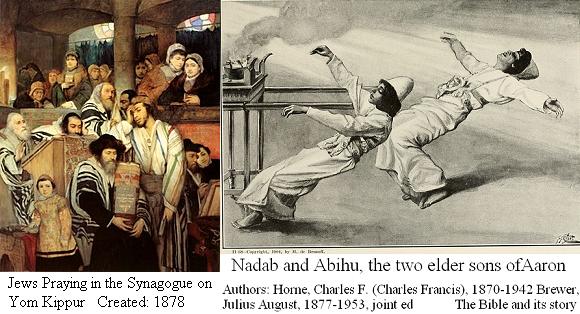 ○The origin of "Faith of Atonement" While John the Baptist saw Jesus coming toward him on the banks of the Jordan River and said, "Look, the Lamb of God, who takes away the sin of the world!" (John 1:29) and today Jews sacrifice lambs for their sins and fast on the day of Yom Kippur (the Day of Atonement), that is, the 10th of the Tishure (the 7th month), which falls between the end of September and the middle of October on the Gregorian calendar, every year. Aaron, who is the elder brother of Moses and is regarded as the ancestor of the tribe of Levi, had two sons called Nadab and Abihu. One day, a fire occurred accidentally while the two were burnning incense and both of them burned to death. It says because they put charcoal contrary to the rule into the censers and incurred the wrath of God.(Le 10:1-2) Aaron brought his family's and Israeli people's trespass-offerings to God for their sins and calmed the wrath of God. At that time, Moses prohibited Aaron and Aaron's other sons to attend the funeral of Nadab and Abihu and mourn. Moses also spoke to Aaron and to Aaron's other sons, "Take the meal offering that remains of the offerings of GOD made by fire beside the altar." However, they did not obey the orders and made Moses more furious.(Le 10:3-20) Apparently there seems to have been a conflict between Moses and Aaron's family over the ritual. God ordered Aaron to atone not only for his family but also for the whole Israeli people. Perhaps on behalf of the whole Israelis, he performed a certain ritual which caused Moses' displeasure. Anyway, this incident became the origin of Yom Kippur, the largest Jewish festival. By the way, Moses, a Levite, had an elder sister and an elder brother named Miriam and Aaron respectively. (Nu 26:59, Ex 6:20) Moses, who was slow of speech and of a slow tongue, got permission from God to fulfill his mission together with eloquent Aaron. (Ex 4:10-16) Moses was eighty years old, and Aaron eighty three years old, when they met Pharaoh.(Ex 7:7) However, when Moses climbed Mount Sinai and was missing for 40 days, Aaron cast a golden calf to try to maintain spiritual centripetal force but Moses was furious at what he had done.(Ex 32) And Miriam and Aaron expressed dissatisfaction that Moses had married the Cushite. (Nu 12:1) Aaron is regarded as the father of Jewish priests.(Ex 28-29) And Mary, mother of the Jesus, is the Aramaic form of Miriam 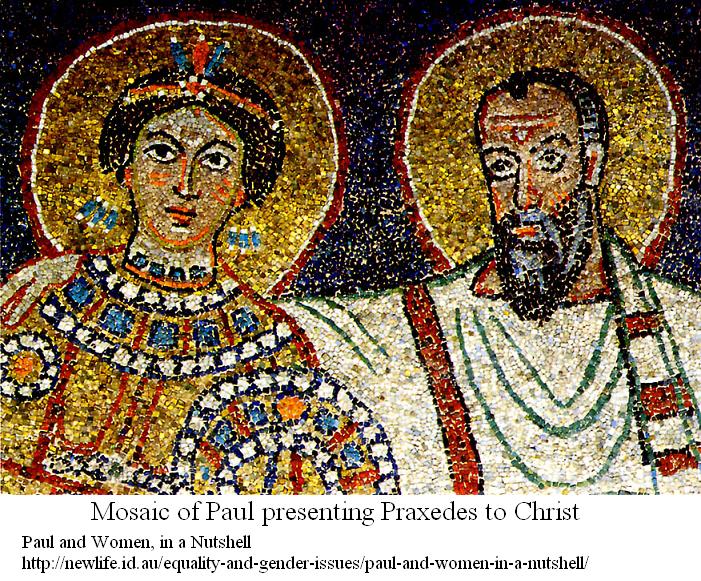 ○The baptism of the Holy Spirit (Born of causes and conditions) Paul wrote, "Greet Rufus, whom the Lord picked out to be his very own; and also his dear mother, who has been a mother to me. (Roma 16:13)" at the end of 'Epistle to the Romans.' If Rufus mentioned by Paul in his letter is same person of the son of Simon, this mother of Rufus not only might have brought up Jesus together with her own children but also might have been a spiritual mother who converted Paul to Christianity. If so, Jesus and Paul would have been spiritual brothers through her. Thus, it seems that Jesus and Paul were bound by a thread of fate. 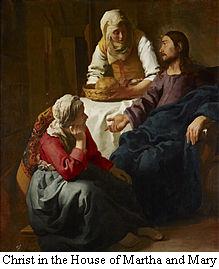 ○Jesus' Triumphant Entry of Jerusalem Six days before the Passover, Jesus again went to Bethany and had dinner with his disciples at the house of Lazarus. Then Mary took about a pint of pure nard, an expensive perfume; she poured it on Jesus' feet and wiped his feet with her hair. But Judas Iscariot objected and said, "Why wasn't this perfume sold for three hundred pence, and the money given to the poor?" Jesus replied, "Leave her alone. She did this in preparation for my burial. You will always have the poor among you, but you will not always have me." (John 12:1-8) The next day the great crowd that had come for the Feast heard that Jesus was on his way to Jerusalem. They took palm branches and went out to meet him, shouting, "Hosanna!" "Blessed is he who comes in the name of the Lord!" "Blessed is the King of Israel!" Jesus found a young donkey and sat upon it, as it is written, "Do not be afraid, O Daughter of Zion; see, your king is coming, seated on a donkey's colt." (Zec 9:9) 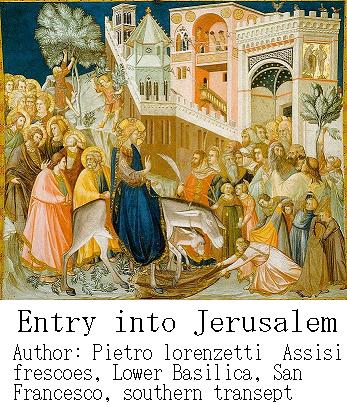 The Gospel of John comments as follows; At first his disciples did not understand all this. Only after Jesus was glorified did they realize that these things had been written about him and that they had done these things to him. (John 12:16) In other words, the disciples of Jesus realized that the scriptures of the Book of Zechariah, the Apocalypse of the Old Testament, were fulfilled at that time. Although it is obvious that the plan, that they made a big demonstration based on the Old Testament prior to the Passover Feast, had been carefully prepared in advance by many people including Jesus' brothers lead by James the Less, Mary Magdalene, her sister Martha and her brother Lazarus, the most of Jesus' direct disciples, especially three close aides of Jesus, that is, Peter, James the Greater and John seem to have not involved in the plan. Actually, the description of the Gospel of John rather implies that they were deliberately placed out of the loop. 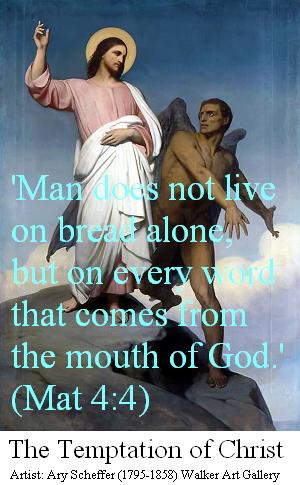 ○The story of the birth of Deuteronomy Although the Gospel of Mark mentions that Jesus fasted for 40 days in the wilderness and was tempted by Satan after being baptized with water by John the Baptist, it does not talk on the Satan's attempt specifically. In contrast, the Gospels of Matthew and Luke describe the contents of the three temptations of Satan to Jesus. And Jesus defeats these temptations by quoting Deuteronomy. Aside from the possibility of fasting for 40 days, "40" seems to be a figure that symbolizes "tribulation" in the Bible such as the rain of forty days and forty nights in the story of Noah's ark ship, wandering in the desert for 40 years in the story of the Exodus, Moses' spending time on Mount Sinai too, that is, forty days and forty nights, to receive the Ten Commandments from God and so on. Deuteronomy, which is called "The Lost Book of Moses," was discovered in 621 BC just as King Josiah (reigned 641–609 BC) of Judah embarked on a religious reforms to eliminate the influence of idolatry and paganism. Therefore, the authors of the Gospels of Matthew and Luke seem to have tried to reinforce the contents of the Gospel of Mark, using the reformation of King Josiah as a model. 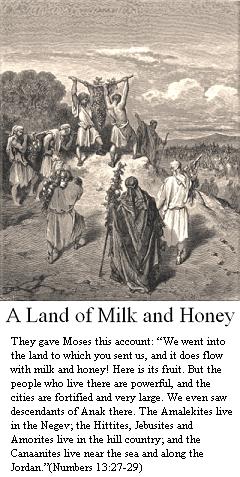 The Jews, who had escaped from Egypt led by Moses, travel to south along the west coast of the Sinai Peninsula to Mount Horeb over a year. After that, they headed to north on the coast of the peninsula and reached Kadesh, that is, the entrance of the promised land of Canaan in only 11 days. But Moses gave up the invasion after witnessing indigenous people's strong defense ability. Then they had to roam the wilderness for 38 years. Moses realized that his death was near after his elder sister Miriam and his elder brother Aaron had died at Kadesh and Mount Hor respectively. Moses died at the age of 120, looking out across the 'promised land' of Canaan from Mount Nebo on the east side of the Jordan river after he had written "Deuteronomy" in the wilderness of Moab and appointed Joshua as his successor.  [Acknowledgement for the sixth edition] This book "The Origin of Christianity" is a compilation of my essays originally published on our electronic publication "SEAnews" as MISC (miscellaneous thoughts). After publishing its first edition, the author's own reviews of the book placed on SEAnews had been augmented into it and the second, the third, the fourth and the fifth edition were also published. From the fourth edition onwards, the Japanese and English versions have been sold through Amazon and the Chinese version through the SEAnews eBookstore. By the way, I had received a few Facebook friend requests in each year previously, but a huge amount of friend requests received immediately after completing the delivery of "Review:The baptism of the Holy Spirit (Hanukkah)." It was around January 17, 2019. So I decided to accept all of them same as before and to let these new friends join our Facebook Messenger chatting group. However, it is limited to those who are displayed in the candidate list that can be added to the chatting group. Because such many people responded to the review of the book, I decided to publish the sixth edition of "The Origin of Christianity" by remaking it into "An Epic Tale of the People of the Covenant" depicting the story that Christianity was born from "the church movement" which had occurred after the people of the Covenant had departed from the Fertile Crescent between the rivers of Tigris and Euphrates, had emigrated to the promised land Canaan and then had been dispersed to various places of the world. Thank you again for the encouragement from many people through the Facebook Messenger site during the process of making the 6th edition. [Acknowledgements for the first edition] When I started writing this book, I got many tips from the following four books, "The Invention of the Jewish People by Mr. Shlomo Sand", "The Jesus Dynasty by Mr. James D. Tabor", "The Original Jesus - Buddhist Sources Of Christianity by Mr. Elmer R. Gruber & Mr. Holger Kersten" and "The Gospel of Thomas (Japanese version) by Mr. Sasagu Arai", a website "Paul's life and the real image of Jesus" and two Christian mail magazines published separately by Mr. Koji Tanaka and Mr. Takao Murakawa. I am deeply grateful to these people and at the same time, I have to apologize that I might have quoted their contents in different contexts not intended by their authors. I started to write a series of miscellaneous thoughts about the conflict between Japan and its neighboring countries, China and Korea and published them on the SEAnews a dozen years ago. This turned out to be a foreshadowing of writing this book now. Incidentally from around that time, the local followers of "Watch Tower" began to visit me weekly and help me to study The Bible in English, Chinese and Japanese. Therefore, the views exchanged with these people also are reflected in this book. I appreciate what they have done for me. I would like to heartily thank Mr. Craig Bailiss, a senior teacher at European Languages Dept. in inlingua School of Languages in Singapore, who transformed my poor English in this book to international standards. I would also like to thank Mr. Augustine Siew and Giac Discoli, the Managing Director and Principal of the school respectively, who had assigned Mr.Bailiss for correction and proofreading the English version of this book and also Mr. Graham Sage, the previous Managing Director of the school. I also express my gratitude to an ex-roommate, who studied at the faculty of architecture in the National University of Singapore, when I studied at the Chinese Language and Research Centre in the University, for assuming the proofreading of Chinese version of this book. [Notes about the Author] Atsushi Murakami was born in Ueda city Nagano prefecture, in 1949. He studied The Four Books of Confucianism, I-Ching (The Book of Change - one of the Five Classics), the Gateless Gate (Mandarin: Wumenguan, Japanese: Mumonkan), The Blue Cliff Record (Biyanlu in Mandarin; Hekiganroku in Japanese), The Record of LIN-CHI(Mandarin: Linjilu, Japanese: Rinzairoku), Makashikan (Mandarin: Mohe Zhiguan), Shobogenzo, Kojiki, Nihonshoki, Nihon-Gaishi, Jinnoshotoki and The Holy Bible etc., in Toko-Shoin, while frequently attending Sesshins (a period of intensive meditation in a Zen monastery) organized by Zen Associations of Ashikaga and Northern Shinshu etc. In 1968, he assumed the secretary-general of Toko-Shoin after graduating from Kawagoe Boys' Senior High School in Saitama, Japan. He studied Mandarin at the Chinese Language and Research Centre of The National University of Singapore in 1980/81. He joined Pana News, a news agency in Singapore in 1982. He set up SEA Research in 1991 and began publishing SEAnews in 1992. He is the incumbent president of SEA Research and editor of SEAnews. Literary work: The Origins of Christianity Book translated: "Cultural Revolution of China I experienced" by Liao Zhigang, published by Nishinhodo. ○One world:The aim of SEAnews ◆Recruitment of Ad-SEAnews CanvassersYour Comments / UnsubscribeSEAnews TwitterSEAnews MessengerSEAnewsFacebookSEAnews eBookstoreSEAnews world circulation |
|
[Your Comments / Unsubscribe]/[您的意见/退订]/[ご意見/配信停止]
Please do not directly reply to the e-mail address which is used for delivering the newsletter. 请别用递送新闻的邮件地址而直接回信。 メールをお届けした送信専用アドレスには返信しないで下さい。 |